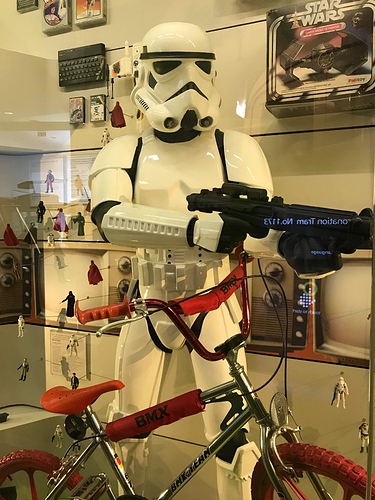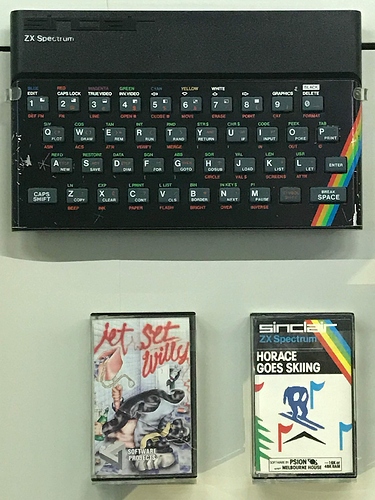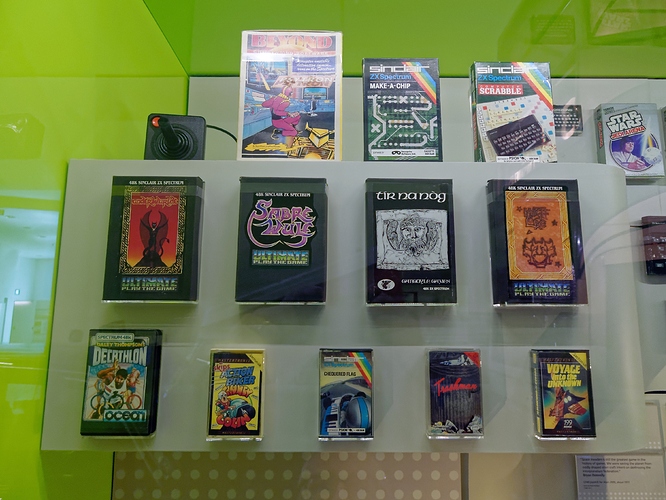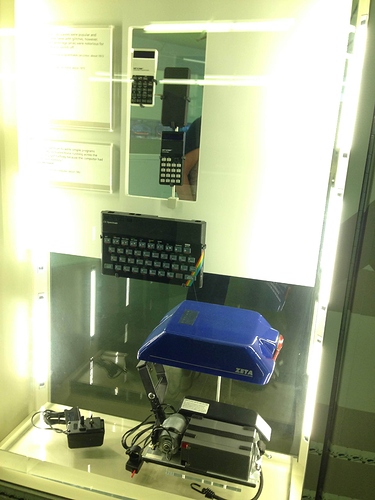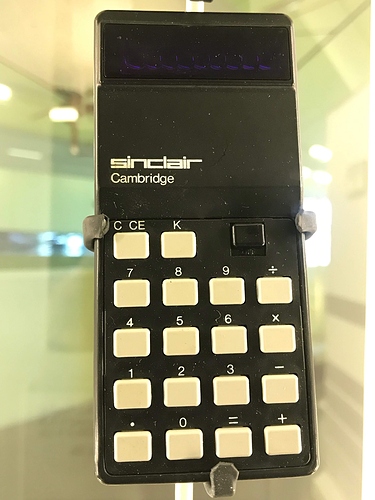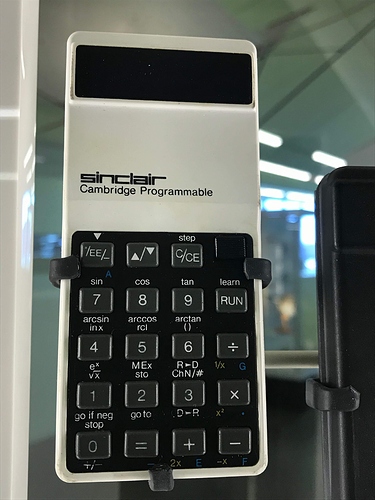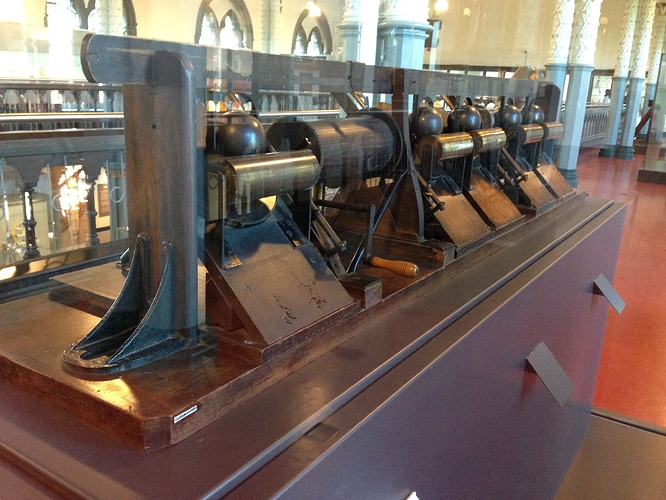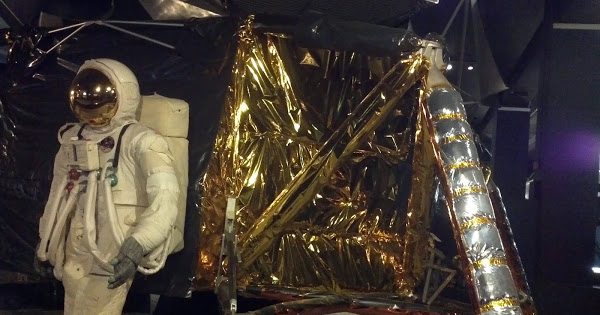Last week @Revaldinho and I travelled to Glasgow, for a computer-history-related conference and a bit of sightseeing. Let’s start with the sightseeing - we found some Sinclair devices in the Riverside Museum, which is predominantly a transport museum, offering a simulated ride on a Sinclair C5 which I had a go on. There was a Spectrum in a display of 1980s desirables (Stormtrooper outfit, anyone?) and a couple of calculators near the C5 to keep it company. Appalling photos by me, clear and sharp photos by @Revaldinho:
Here’s some software, including the Make-a-chip CAD application, probably not useful for designing the QL:
And upstairs, the calculators near the C5 and the Zeta e-bike motor, being a Cambridge original (Type 3) and a Cambridge Programmable:
After the Riverside, we visited the Hunterian museum, where we saw many wonders, including Kelvin’s Harmonic Analyser - a set of disc-globe-cylinder integrators from 1876 which does a sort of Fourier Transform by mechanical means and reduced months of effort to something rather less:
On the open-top bus ride around the city, we were lucky to glimpse some retrocomputing: a classic Mac, or perhaps an SE, and a gaggle of iMacs. These were in one of three or four computer shops on Argyll Street, one of which was unpromisingly called E-Waste.
At the history conference itself, which covered all sorts of IEEE-related topics, there was also some computer history: the transputer network, and then NCUBE and then myrinet cluster used to simulate power distribution networks in Japan; the WEIZAC and GOLEM machines made in Israel; Simon Lavington’s story of all 9 Ferranti Mark I machines including the secret one which went to GCHQ; our own presentation on Ferranti’s innovative and long-lived but commercially unsuccessful F100-L 16-bit microprocessor; Ed Owen’s story of Harry Huskey the chief designer of the Bendix G-15 - a design he first created and then shopped around to companies not yet making computers; a story, again from Japan, of using Z80 to control the ladders of the latest fire engines; the story of computing manufacture in Czechoslovakia, where fault-tolerant techniques were necessary due to reliability trouble; the sad story of VIPER, the UK’s proven-correct micro; the evolution of DSP capabilities from AMI’s S2811 to AMD’s ADSP-21xx; the story of TI’s DSP chips, starting with the skunkworks Speak’n’Spell; a snapshot of handheld computing with emphasis on Sharp’s 1211; a celebration of women engineers including Kathleen Booth, Winifred Hackett, and of course Ada Lovelace got a mention. We also missed some things which ran on a parallel track - looks like Zuse and Bush got mentions, and the mechanical devices of Vladimir Karapetoff sounded interesting too.
Unfortunately the proceedings are likely to land behind a paywall. Possibly the various authors will write, or have written, elsewhere. HISTELCON itself reappears every two years, somewhere in the world. We were lucky to be around for a relatively local one.
I feel I may need to buy Lavington’s book…
